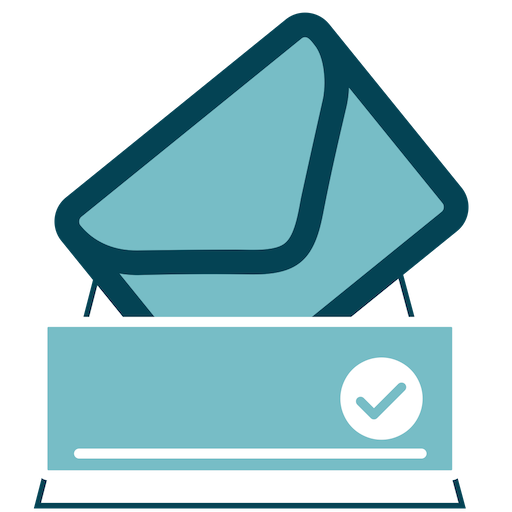Electronic Signature on Delivery for E-mail

I quietly launched a new Mac application today. It is the result of a few weeks of dealing with various offices, administrators, and bureaucracies.
We are deep into the paperwork side of getting our new home built. The last weeks have seen a distinct uptick in the number of tasks we need to instigate and manage. Doing this in another language and within another culture is testing.
One key difference between the Anglo-Saxon and French approach to business is how each culture deals with e-mails and correspondence.
I am using the phrase Anglo-Saxon to clump Australian and British notions together for this topic. The two countries are close enough in style to consider as one.
The Anglo-Saxon approach to e-mails, and correspondence in general, is to reply fairly rapidly. Within days to a week. A reply is typically expected to say thank you and that your request is being processed. Even when no action is immediately possible, or when difficulties to fulfil the request are met, a reply is still expected.
The aim being to keep you in the loop and informed about delays. The Anglo-Saxon business ideal is to offer lots of feedback and statements of progress. Writing to an organisation and hearing nothing for months would be a cause for concern.
The French approach is different. A more taciturn approach until the task is done. If there are problems or difficulties, the reply waits. From us, with Anglo-Saxon expectations, that behaviour can appear to be avoidance, neglect, or simple inaction. It can be frustrating not knowing what is happening. It becomes easy to imagine nothing is happening.
For the British at least, the French have a reputation of being bureaucratic and slow. Like most stereotypes, and it is a stereotype, this is not true. The difference in most cases is a lack of communication.
So how to alleviate the problem – if only a little?
E-mail receipts and notification reports have been helpful. Much of time I can reduce my stress simply by knowing an e-mail has arrived. If I learn the e-mail has been read, even better.
The Mail.app application on OS X does not insert the required information to ask for automated receipts. Automated receipts are reply e-mails sent by various computers along the way as your e-mail is delivered. The replies let you know the e-mail arrived and, sometimes, that the e-mail has been read.
I wanted to add these requests to some of my important e-mails. So I wrote Miln Mail Receipt.

Mail Receipt is an experimental application that adds those few optional extras into my outgoing e-mails. I do not use it every time; in fact there are only a handful of e-mails that I do want receipts from. The flood of automated replies would become a problem in their own right, if I asked for them in every outgoing e-mail.
Miln Mail Receipt is a way of embodying a means to quickly turn on and off read receipts in OS X’s Mail.app. Something to deploy when dealing with government departments and important requests that deserve the nearest equivalent to an electronic signature on delivery.
Like most Miln products, Miln Mail Receipt is also an experiment. This is my first application written in Apple’s new Swift language. Thus it took longer than I would have liked and lacks some of the originally planned abilities. But it works and does what it needs to do.
Miln Mail Receipt is available to download now and is free. I hope it reduces your stress too.